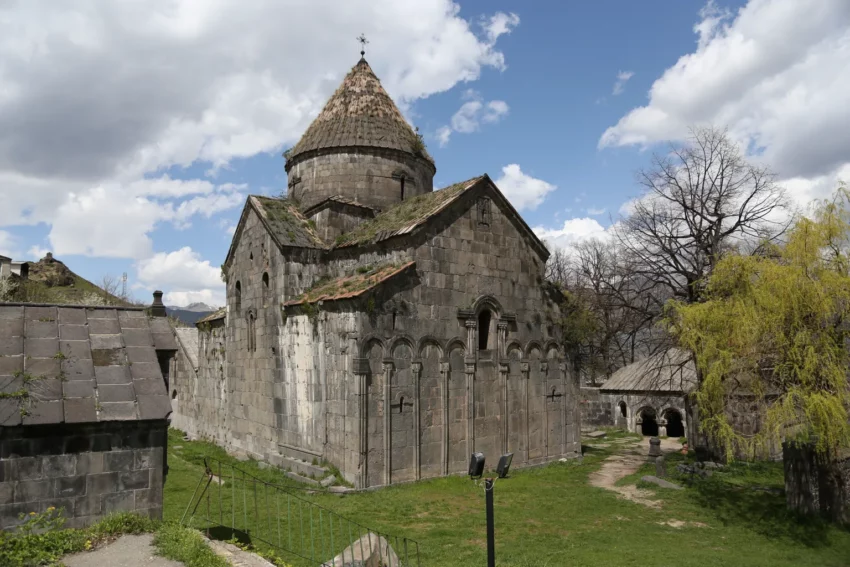Discovering Sanahin Monastery
Nestled in the Lori Province of Armenia, Sanahin Monastery stands as a testament to Armenia’s rich spiritual and architectural heritage. Founded in the 10th century, this ancient site offers visitors a glimpse into the past with its well-preserved structures and fascinating history.
Get your dose of History via Email
The Meaning Behind Sanahin
The name “Sanahin” translates to “this one is older than that one” in Armenian. This phrase likely references the monastery’s claim of being older than the nearby Haghpat Monastery. Both monasteries, visible from each other, form a UNESCO World Heritage Site. They sit on a dissected plateau, separated by a deep gorge carved by a small river flowing into the Debed River.
Tourist Attraction and Religious Significance
Like Haghpat, Sanahin has become a popular tourist destination. This rise in visitors is due to its inclusion in various Armenian tour itineraries and the stunning beauty of its complex. The Armenian Apostolic Church owns the monastery, which is dotted with numerous khachkars (cross-stones) and bishop gravesites.
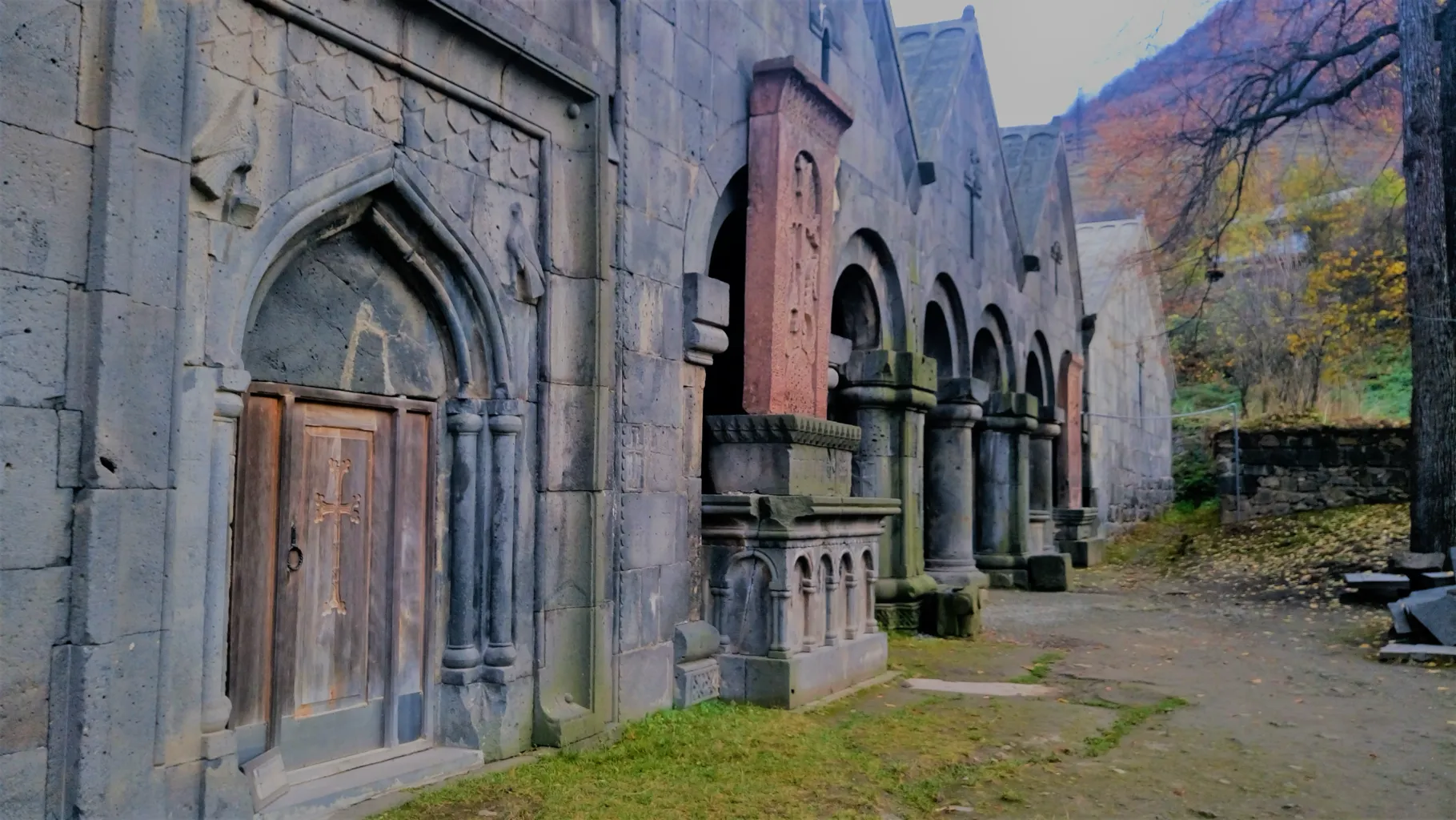
A Journey Through Time
Early Beginnings
The first church, Surb Astvatsatsin (Holy Mother of God), was constructed in the 930s and 940s under King Abas I Bagratuni. In 966, King Ashot III and Queen Khosrovanuysh added the Surb Amenaprkich (Holy Savior) church. Their sons, Kiurike and Smbat, established a congregation and a high school, inviting scholars and clergymen to the site. The founding abbot was Polycarp, followed by the scholar Hovhannes.
Medieval Flourishing
In 979, King Smbat II declared Sanahin the seat of the newly formed bishopric of the Kyurikian kingdom. This period saw significant growth under notable figures like Dioscoros Sanahnetsi. The monastery expanded its library, built the chapel of St. Gregory, and became a major educational center. Scholars like Anania Sanahnetsi and Hakobos Karapnetsi taught theology, philosophy, rhetoric, music, medicine, and other sciences here.
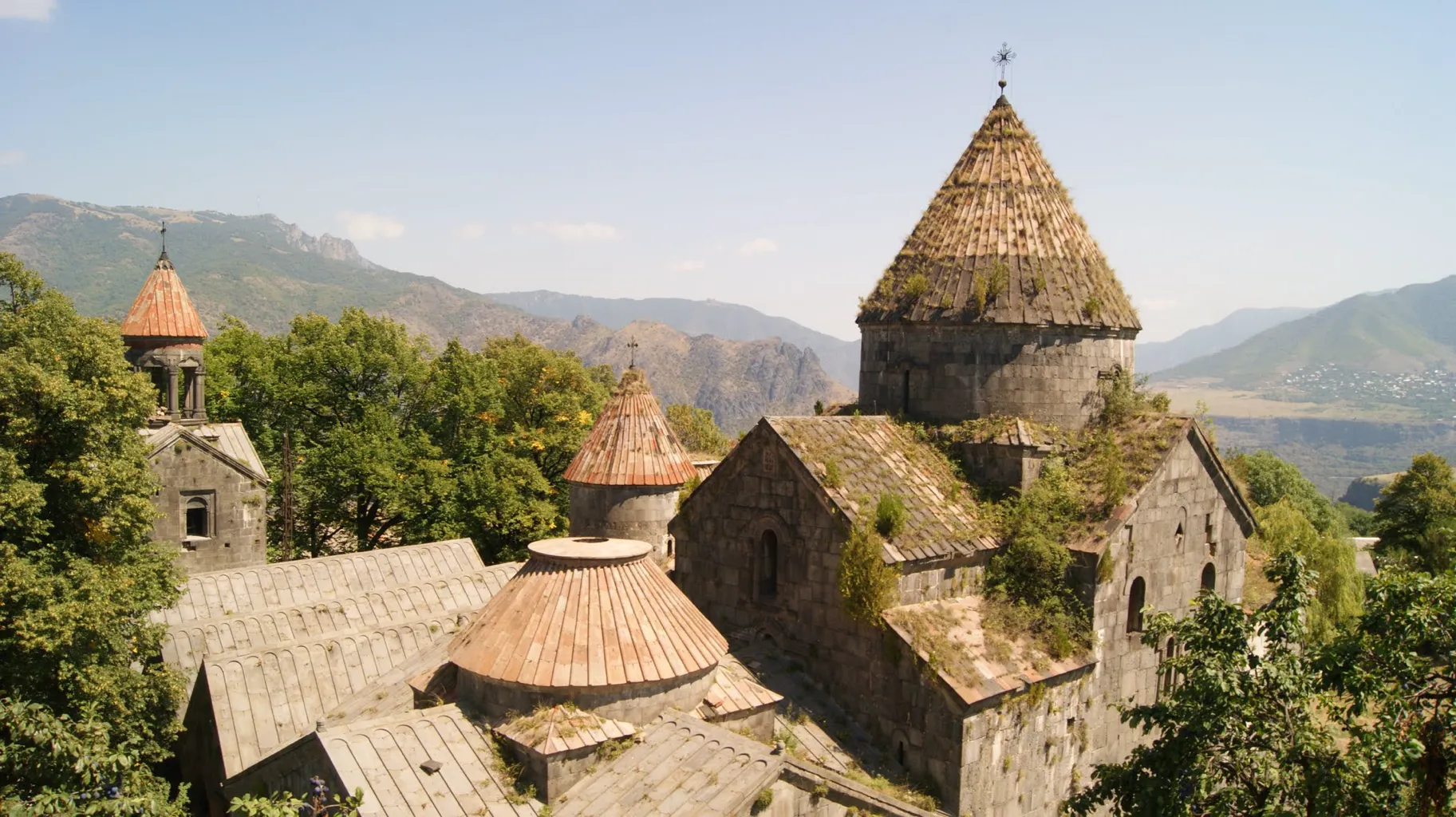
Challenges and Revivals
Sanahin faced hardships during the Seljuk invasions and after the fall of the Kyurik kingdom in 1113. However, in the late 12th century, under the Zakarid princes, the monastery regained its prominence. Large-scale construction projects included building vestibules for the Holy Savior and Surb Astvatsatsin churches, a bell tower, a bookstore, and the famous Sanahin bridge over the Debed River.
Later Developments
The monastery continued to thrive until the Mongol invasions in the 1230s. Despite these challenges, the art of manuscript writing saw a resurgence in the 14th and 15th centuries. During Soviet rule, the site was protected as a historical and cultural monument. In 1998, it was transferred to the administration of the Mother See of Holy Etchmiadzin.
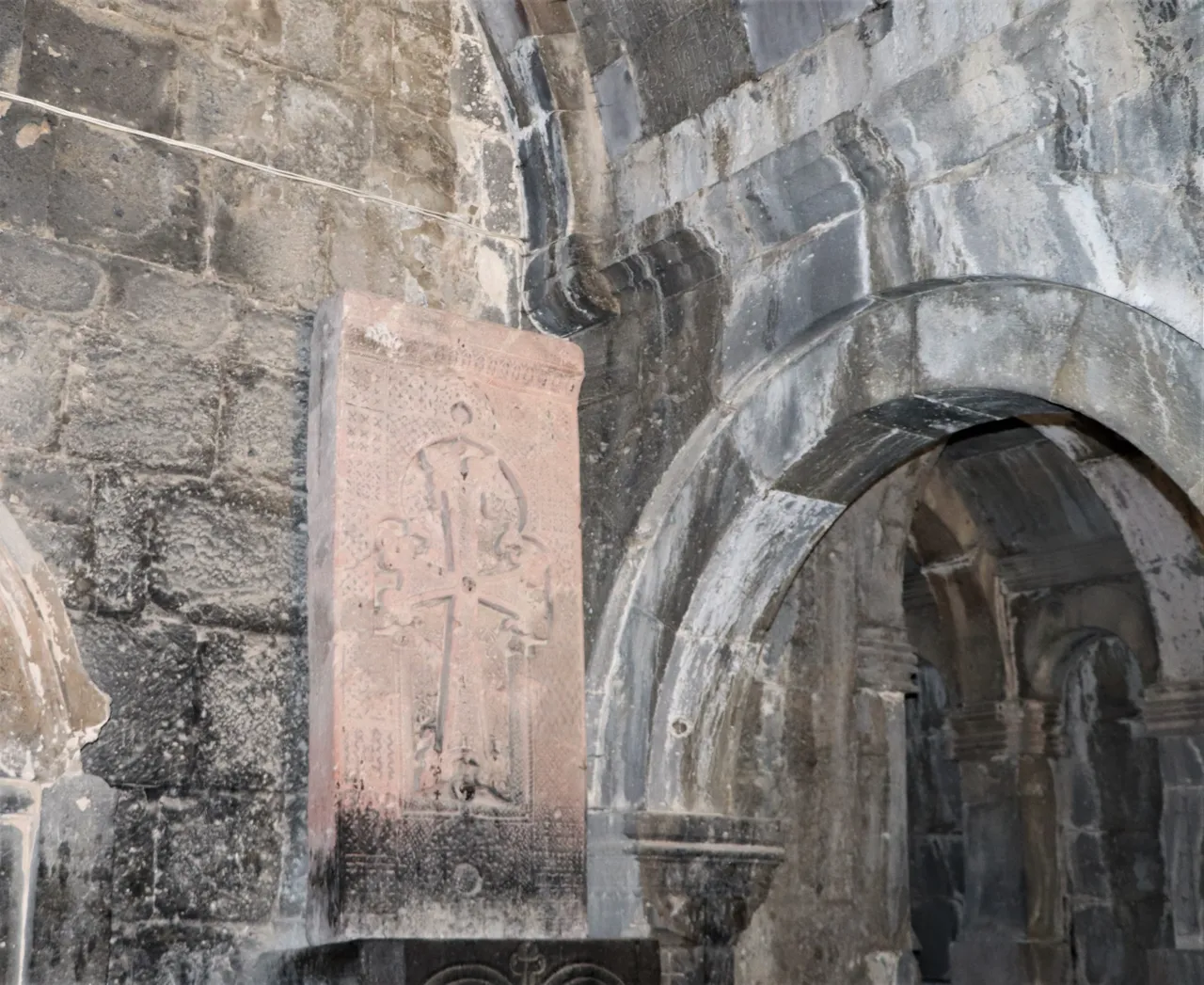
Architectural Marvels
The Church of St. Astvatsatsin
Built between 930 and 950, the Church of the Holy Mother of God is the oldest structure in the complex. It showcases the cruciform dome subtype of Armenian medieval architecture. The church’s drum was originally multi-faceted but was later transformed into a cylindrical shape during renovations in 1652.
The Vestibule of St. Astvatsatsin
Added in 1211, the vestibule or gavit of St. Astvatsatsin is a rectangular structure divided into three sections. It features three pairs of wide arched openings that served as entrances. The interior is simple, with low, massive columns adorned with different decorations.
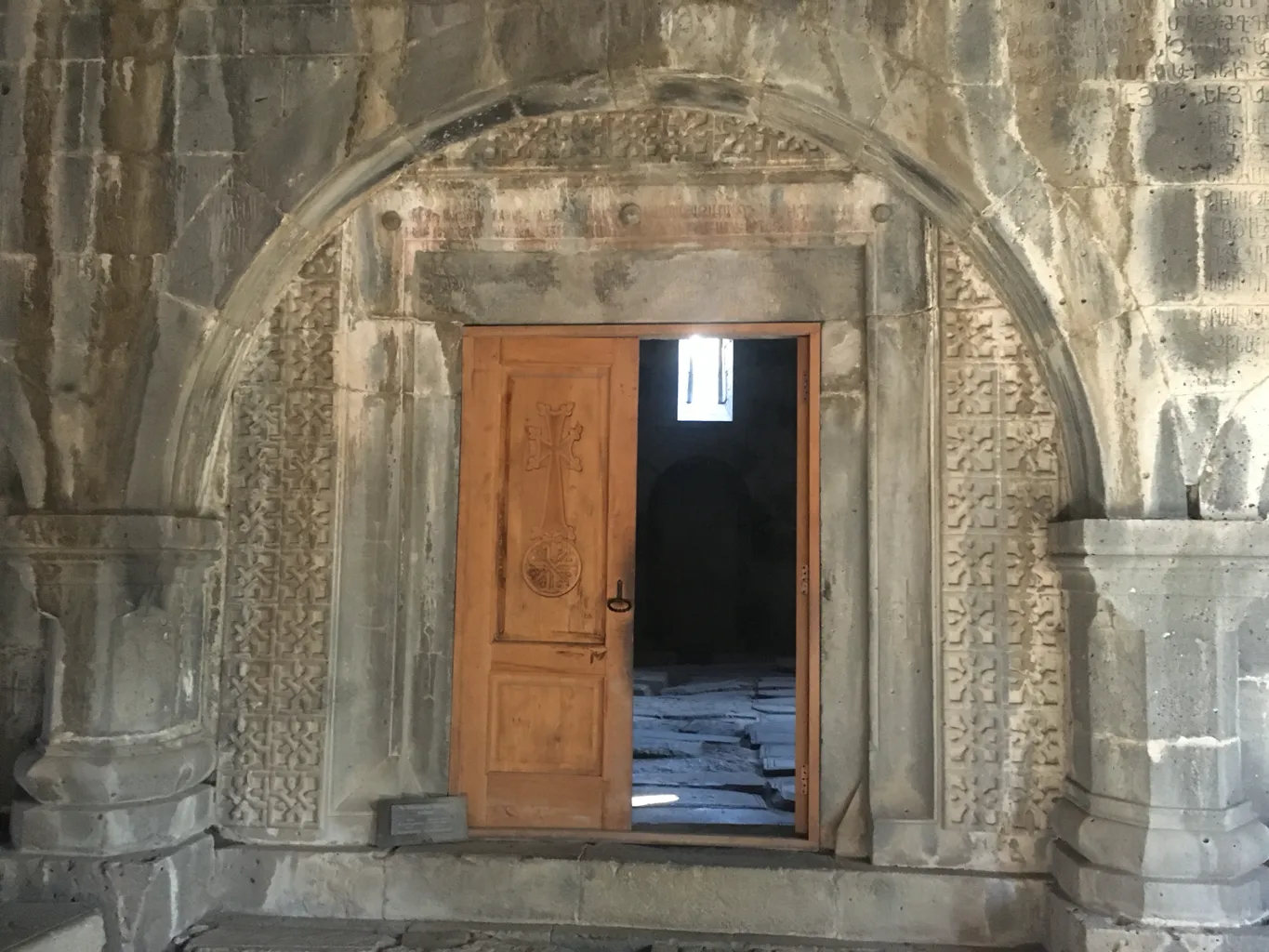
St. Amenaprkich Church
The largest building in the complex, St. Amenaprkich (Holy Savior), was built in 966 by Queen Khosrovanush. This cross-dome structure has two-storey apses and once had frescoes covering its walls. The vestibule added in 1181, built by Abbot Yovhannēs, features a square plan with a central dome and intricate column carvings.
The Academy and Bookstore
The academy, located between the churches of Astvatsatsin and Amenaprkich, dates back to the first half of the 11th century. According to tradition, Grigor Magistros taught here. The bookstore, built in 1063, is the oldest Armenian library and houses many valuable manuscripts.
Other Notable Structures
Sanahin Monastery also includes the St. Gregory Chapel, the bell tower from the 13th century, the St. Hakob Church, and the Zakaryan family tomb. The bell tower, with its three-storey structure, stands out as one of the earliest examples of its kind in Armenian architecture.
Khachkars and Inscriptions
Around 50 khachkars adorn the monastery, each showcasing intricate designs and historical significance. These cross-stones and the numerous inscriptions on structures and tombstones offer valuable insights into the monastery’s history and the contributions of its patrons.
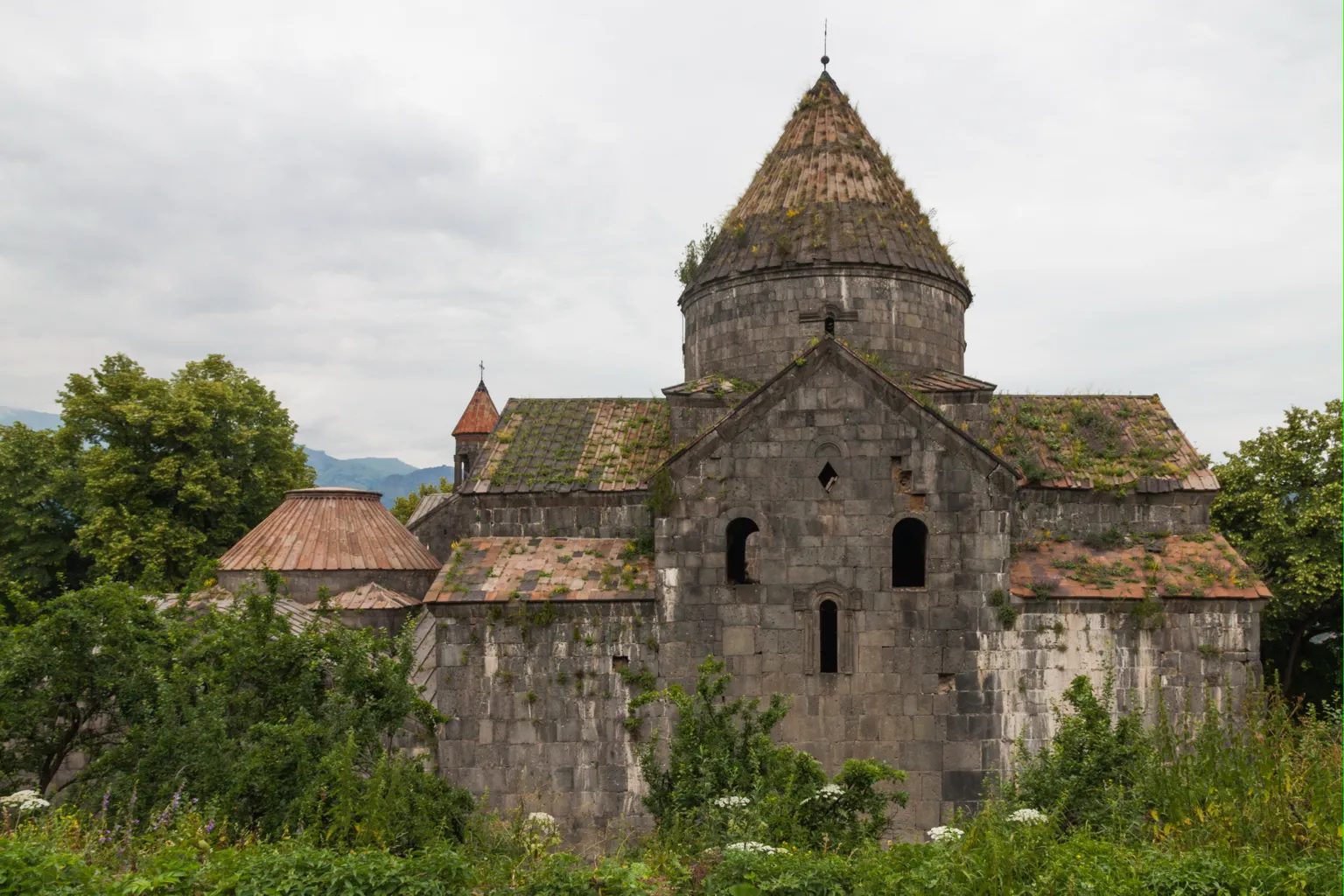
Legends and Stories
A local legend tells of a father and son who built the monastery. The father laid the walls while the son carved the stones. Unfortunately, the son died before they finished. The grieving father left without tearing down the scaffolding. Later, a man from Shnogh learned the secret of dismantling the stairs from the father and received a handsome reward for it.
Sanahin Monastery remains a jewel of Armenian heritage. Its rich history, stunning architecture, and cultural significance continue to captivate visitors from around the world.
Sources:

